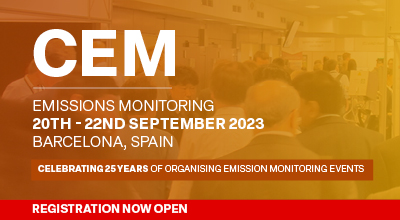| Abstract Title: | PEMS (Predictive Emissions Monitoring System) |
| Presenter Name: | Dr Marco Cannavò |
| Co-authors: | Mr Francesco Bardi |
| Company/Organisation: | Baker Hughes |
| Country: | Italy |
Abstract Information :
In a typical combustion process, as in Gas Turbines, the reactants (fuel and air), undergo an oxidation process generating combustion products, such as carbon dioxides (CO) and nitro-oxides (NOx) that are very harmful for human health.
Legislation which focuses on Environmental protection is increases daily, and Baker Hughes, always works to meet the most stringent emissions regulations (e.g. Dry Low Emissions Technologies for Gas Turbines).
PEMS 2.0 (Predictive Emissions Monitoring System) is a software-only solution (no additional sensors required) that allows the estimation of pollutant concentrations (NOx, Oxygen and CO) produced by gas turbines using field operational data measurement. It includes a user-friendly machine interface integrated in the control unit.
Control software equipped with PEMS 2.0 will help detect if the engine complies with emissions limits: knowing the levels of emitted pollutants during the operation make easier to assess the correct functioning of the combustion system.
PEMS 2.0 is based on three models, one for each type of emission, and it was developed using different technologies:
a) First principle models, based on thermodynamic and kinetic reactions
b) Data-driven and Artificial Intelligence based on genetic algorithms and neural networks
All technologies need an initial phase of data collection from the same engine where the software will be installed. A detailed list of input variables has been defined, and based on that, models and coefficients models can be created and tuned on the desired gas turbine.
PEMS 2.0 predicts emissions level on Steady State conditions, i.e. engine is not in acceleration or deceleration.
The solution can be installed on Aeroderivative Gas Turbines equipped with Dry Low Emissions or SAC Combustion System. A check after the engine combustion tuning/mapping is required to verify the accuracy of the prediction and evaluate a possible recalibration. Time for recalibration could vary from 4 to 16 hours. Software shall be tested and calibrated at twice a year.
The most common technology used to measure gas turbines emissions is the CEMS (Continuous Emissions Monitoring System). Compared to it, Baker Hughes PEMS 2.0 has:
a) Reduced cost
b) Less installation costs
c) Easier and less expensive maintenance
KeyWords: PEMS, Emissions, Predictive, NOx, CO, Software, Neural Networks, Genetic Algorithms, AeroDerivative Gas Turbine, Dry Low Emissions (DLE)

